Manitoba truck driver’s 3D artwork featured in Canadian, U.S. galleries
Eugene Kabrun, a Manitoba truck driver, felt honored when a fellow artist made a two-hour drive from Cincinnati, Ohio, solely to meet him in Cleveland and acquire one of his paintings. He planned to present it to his daughter as a housewarming gift.
“I was especially pleased by that,” says Kabrun. “He saw my painting through Facebook and we met. He was also from Ukraine but lived in the U.S. for over 20 years. And he is also an artist.”
Having his work recognized was a compliment. Even though art has been an integral part of his life since he was a little boy growing up in Kyiv, Ukraine, Kabrun only started painting on canvas professionally in 2017.
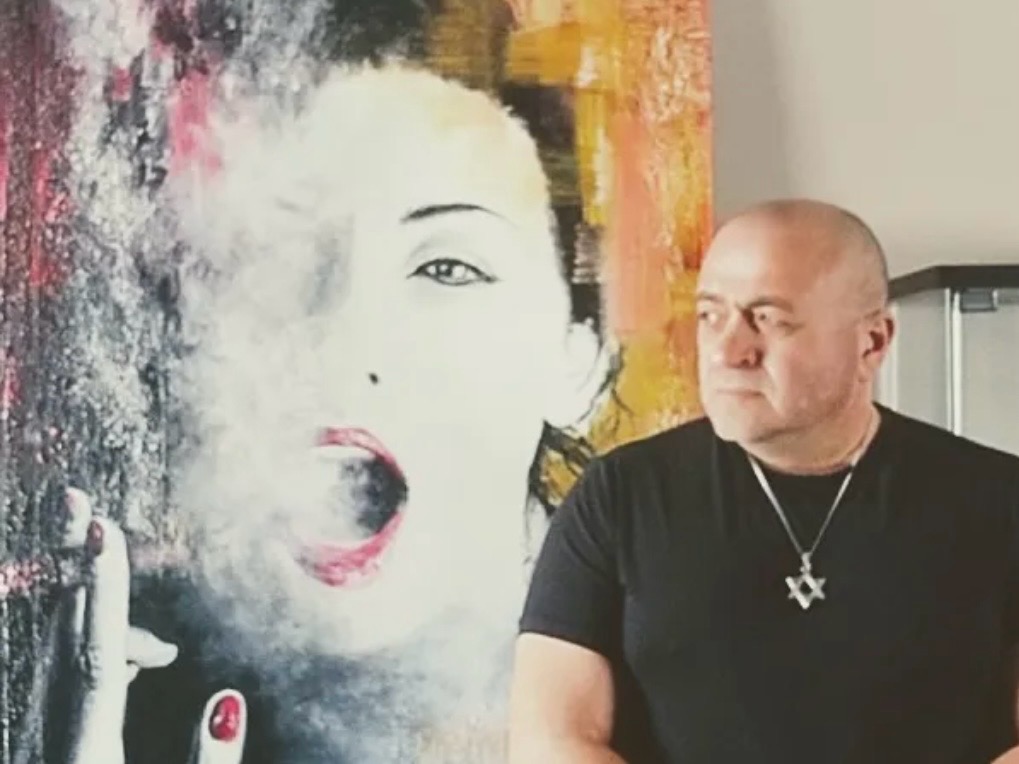
But since then, his work has been noticed by several Canadian and American art galleries.
Kabrun’s art is currently featured at the Steinbach Arts Council Gallery exhibit, The World in Structure, in Manitoba until Feb. 23. However, his biggest exhibition to date remains in Dow Art Gallery in St.Paul, Minn., where Kabrun features 25 of his pieces. His art was also exhibited in other galleries in Minnesota and North Dakota.
Trucking-inspired
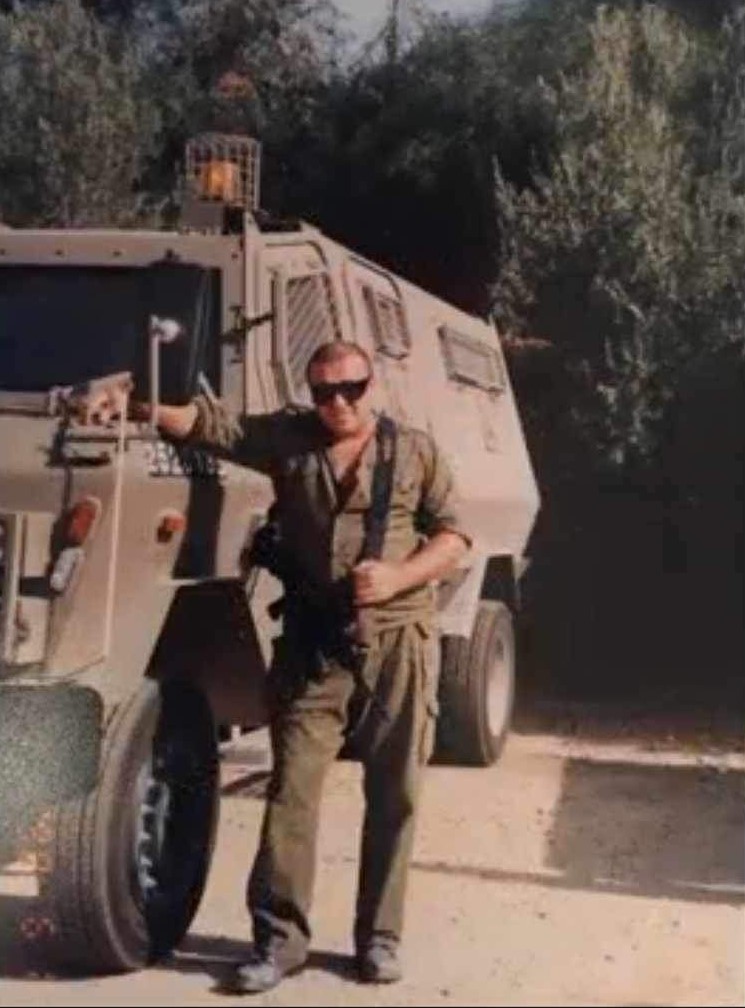
And a fair share of inspiration comes from his trucking life and even features truckers. Kabrun spends five to six days a week driving across Canada, and the southern and southeastern U.S from Lundar, Man.
But the first time he drove a truck was in 1990 when 18-year-old Kabrun moved to Israel from Kyiv and enrolled in the army.
Later, he worked for local Israeli police and as a truck and off-road transport driving instructor. That experience facilitated becoming a truck driver when he moved to Canada in 2007.
“I even wanted to start my own trucking company,” Kabrun recalls. But in 2017 he sold his truck and dove into professional art. “I decided to dedicate more time to the family and myself. Now, that I have a normal schedule, I get more time to paint.”
Creative process
Kabrun spends on average three days at home between trips and paints at night.
“My wife picks me up from the yard and we go get what I need from Michaels [an art supply store], or sometimes I tell her what to buy in advance. Depending on my mood, that same night or the following evening, after everyone is asleep, at around 10-11 p.m., I come down to the basement and paint for six hours or so, and go to bed at around 5 a.m.”
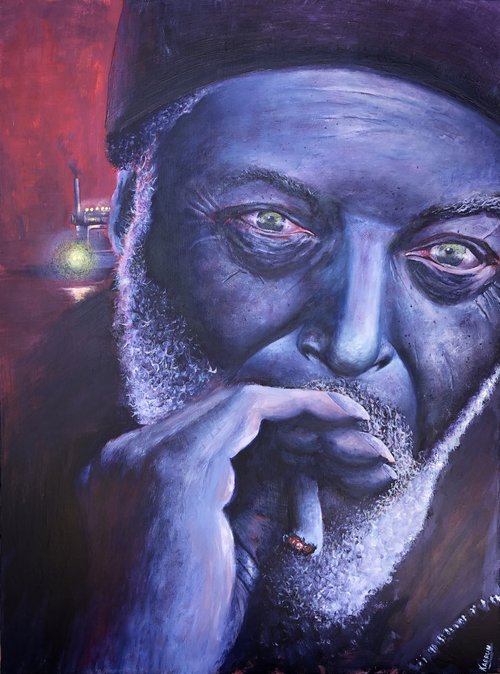
But this is just the first round of painting, he says. In six hours Kabrun just outlines the basics, and will sometimes finish it throughout the month, little by little.
“When I go back on the road, I take a picture of what I have completed so far, and I think as I drive. I do not see the original painting when I am in the truck. That’s when I notice the wrong lines, wrong stains and other things [that] need fixing [when I get home].”
Sometimes the landscapes he sees while driving can even inspire him to change the painting’s theme, or add colors or elements to the original piece.
That happens often when Kabrun drives on Highway 17. The painting called Spring on Lake Superior, for example, is completely based on a picture he took along this highway.
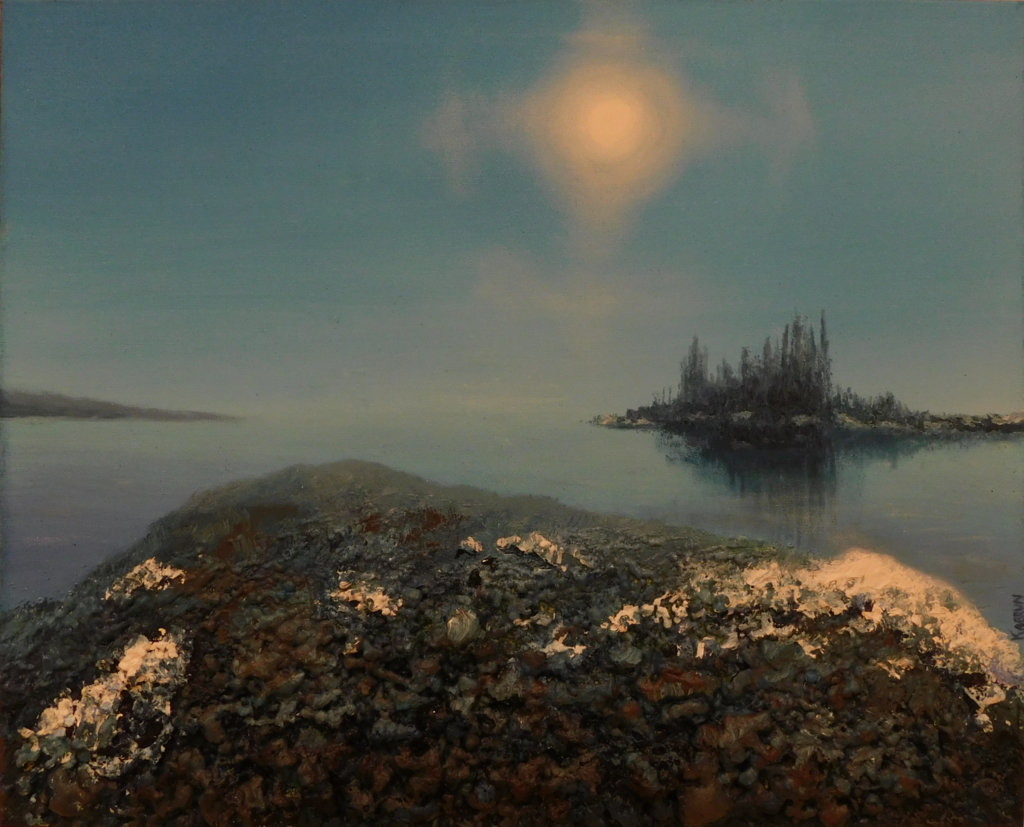
He says the landscapes are inspiring to him there, so he frequently stops to photograph trees, farms, lakes, and more.
“Sometimes I use it as a base for a painting. And now that AI has emerged, I use that for additional ideas to avoid looking for standard pictures online.”
3D elements
Kabrun has always looked for ways to diversify his art, and make it deep, interesting and realistic. He says he was never interested in “standard flat pictures and drawings.” Even as a kid Kabrun preferred working with plasticine and other materials.
Now, he uses foam insulation to create 3D effects.
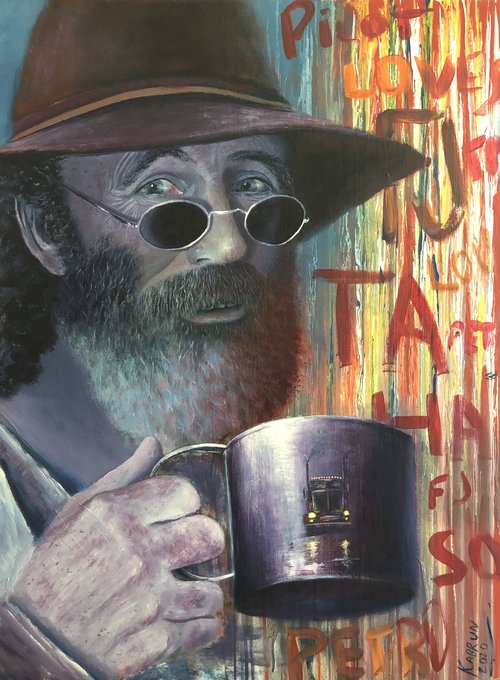
The idea came to him when he made three-dimensional rocks out of foam insulation and hung them behind the wall of his aquarium instead of using a standard flat aquarium background.
“And then I decided to do something interesting for my paintings, too. I looked it up – no one else uses insulation foam for paintings on canvas.”
He says this material allows for different methods of use. “You can make it look like snow, rocks, sand, a brick, and more.”
And this is why Kabrun divided his paintings into three categories.
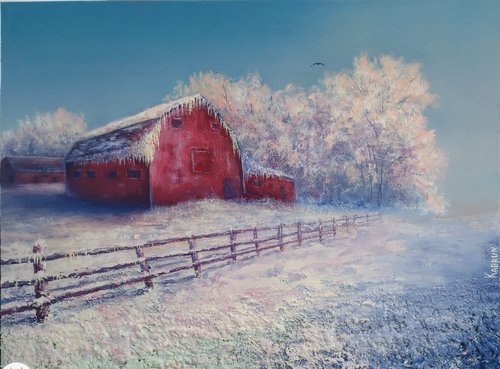
The first category features mostly flat, smooth canvases with only a specific section exhibiting voluminous elements. Examples of this technique are works such as Spring on Lake Superior and Somewhere in Manitoba.
According to Kabrun, this creates the feeling of depth. “People are drawn to touch the painting with their fingertips because the eyes alone are not sufficient here.”
In another type of painting, the foam insulation is subtly integrated, resembling clusters of thick paint, providing a structured dimension to the artwork.
The third category is canvases almost entirely covered in foam insulation, like in his pieces Lighthouse on Lake Winnipeg and Conversation with God.
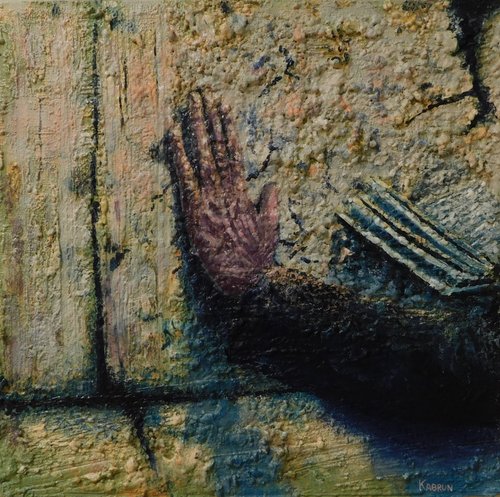
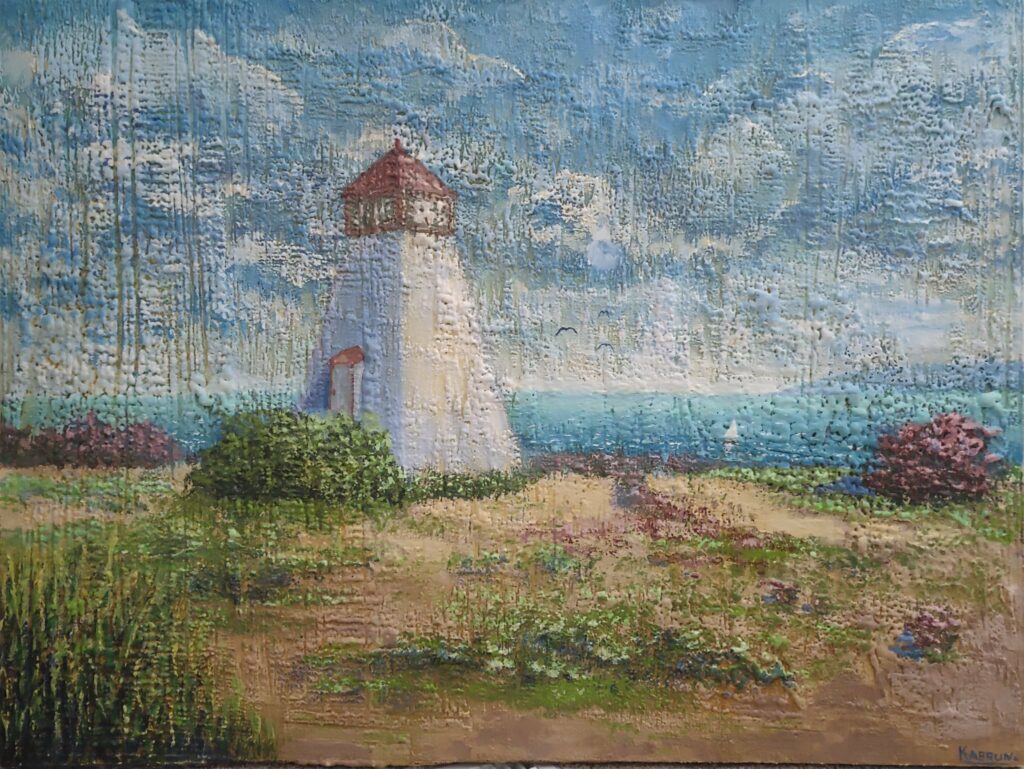
In general, the bigger the painting is, the more freedom there is to add the 3D effects.
Kabrun says he enjoys working with larger canvases, like 36”x48”, or 48”x48”, since anything larger would be impossible to mail.
But he found a way to work around the issue by sometimes delivering the larger paintings in his truck while on the road. This is how he met the man from Cincinnati who bought a piece for his daughter.
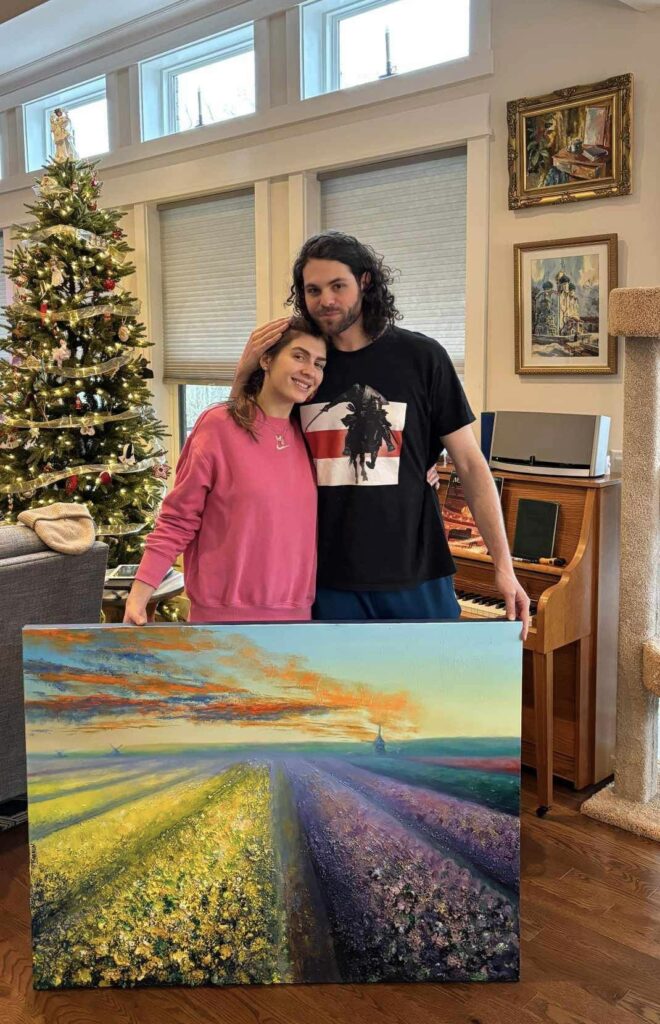
Favorite paintings
When asked about his favorite painting Kabrun has created so far, he says it is always the last one he completed.
“I perceive each of my last paintings as the limit of my abilities, as the most brilliant thing I have done.”
But there is one in particular that is very dear to his heart. It is called War, and Kabrun panted it ‘for the soul’ in early 2022, and never intended to sell it.
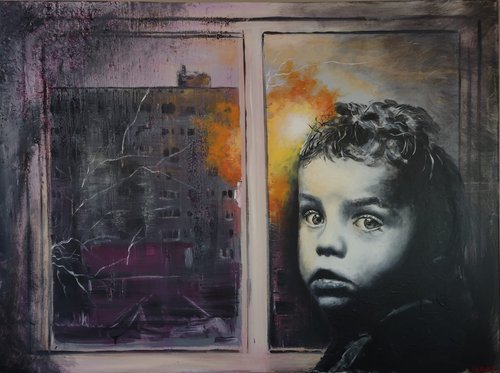
He started working on it after seeing a video of a Russian missile striking a residential building in the Ukrainian city of Mariupol. He later donated it to the Jewish Federation of Winnipeg. The community has been collecting money for the Ukraine Emergency Relief Fund.
When the picture was presented to them, people in the room cried, Kabrun recalls.
“I based the painting on that house and the explosion. It portrays a little boy turned away from the window as the building across goes up in flames,” he says, adding that he wanted the boy’s eyes to reflect confusion, rather than fear.
“His eyes silently ask you, ‘What is this and how did you let this happen?’”
Have your say
This is a moderated forum. Comments will no longer be published unless they are accompanied by a first and last name and a verifiable email address. (Today's Trucking will not publish or share the email address.) Profane language and content deemed to be libelous, racist, or threatening in nature will not be published under any circumstances.
His work is incredible! Well done and bless your inspirations!
I love artistic endeavour and this is brilliant!
Eugene Kabrun – your paintings are simply breathtaking. Beautiful paintings! Very emotional! Great work!
That is beautiful painting and beautiful work my friend keep up the good work. Yes, very very beautiful art. Stay safe on the road.